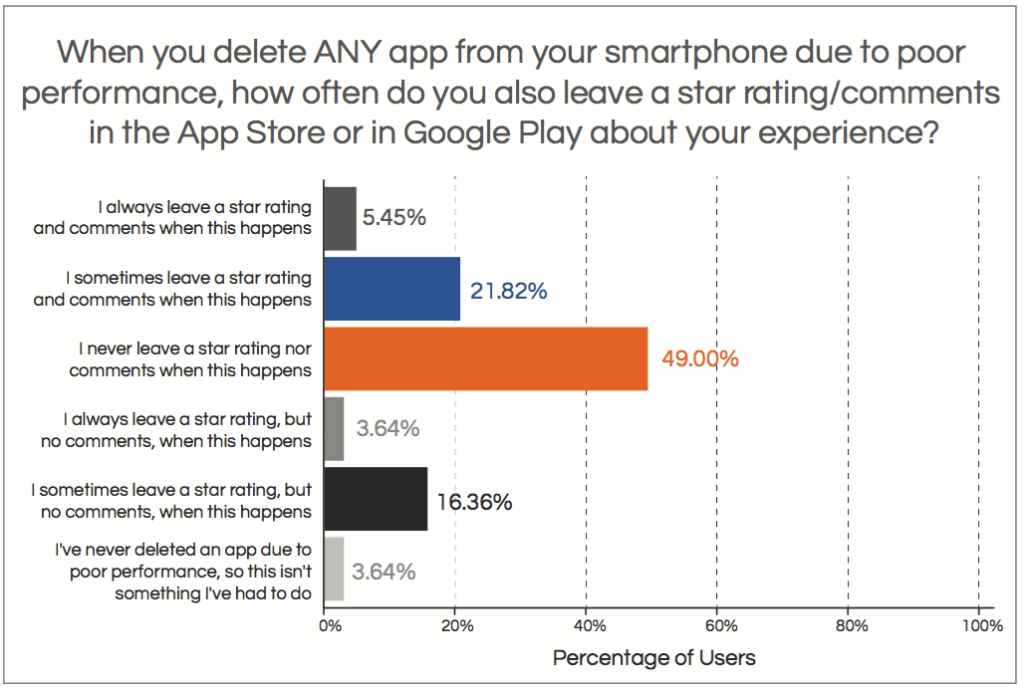The following piece is a guest post from Jay Hinman of Neumob. Guest posts do not necessarily reflect the opinions of this publication. Read more about MediaShift guest posts here.
The shift of media, news and sports eyeballs from print to desktop computers to smartphones – and finally, into mobile apps sitting on those same smartphones – has begged an inevitable question: just how satisfied are consumers with receiving the lion’s share of their news and sports content within mobile apps?
Users of media, news and sports mobile apps have already adjusted their expectations to a world in which breaking news and today’s sports scores come to them within apps on their smartphones — and often from nowhere else. Media consumption today is almost totally on demand and at the whim of the consumer, and it needs to slot quickly and cleanly within the few “hidden minutes” windows that these consumers have within their busy days — or it may not be consumed at all.
Neumob decided to take the temperature of US and UK consumers of media, news and sports mobile apps last month, to help get a sense of whether app performance was actually meeting consumer expectations, as well as to gather a deeper sense of how said users behave when their apps don’t perform as expected.
Here’s what we found.
1. News and Sports apps, not surprisingly, are popular and are widely used.
We asked users “Which of these types of apps do you currently have on your smartphone right now?”, and found that Media, News and Sports apps are, as expected, quite prevalent on smartphones across the US and UK:

60% of respondents use a newsreader app not tied to a newspaper, such as Flipboard, FeedNews or NewsRepublic. Nearly half of respondents (49%) also have apps tied to newspapers on their devices, while 31%, roughly a third, have a sports news/scores app on their smartphones. Finally, 15% of users have a read-it-later app like Instapaper or Pocket that lets them save content to read offline or when they’re in a better place to truly consume it.
2. Mobile app load time expectations simply aren’t matched by today’s reality.
With increased reliance on mobile apps for news and sports information comes heightened expectations for app performance. The survey found that 82% of respondents expected a media, news or sports app to load on their smartphone in 3 seconds or less, with 58% expecting 2 seconds or less.

There’s even a not-insignificant — and likely highly vocal — contingent of 13% of users who now expect Media, News and Sports apps on their smartphones to load in 1 second or less, no matter how many third-party calls and content APIs that need to be loaded concurrently at start-up.
These findings are unfortunately at odds with what mobile app analytics leader Apteligent found in a recent paper, which was that 46% of iOS apps and 53% of Android apps globally—across all categories—took more than two seconds to load. So if over half of an app’s users are expecting load times of 2 seconds or less, and roughly half of all apps are taking longer than this, an app owner had better hope that their mobile app’s load time is — for better or for worse — in the right half.
3. Nearly half of all users simply won’t wait for a slow News or Sports app to load.
When Media, News and Sports app users were asked in Neumob’s survey, “When a media, news or sports app on your smartphone doesn’t load quickly, or if it is slow and not performing well, what do you MOST OFTEN do?”, a whopping 40% of people said they’d close the app and launch something else instead, which underscores the extensive choice on offer in these app markets, and how vitally important is to deliver a fast, smooth app experience every time – even on slow mobile networks.

Another 40% of people said they’d close the app and relaunch it, likely generating not an insignificant amount of frustration and ill will. Worse, 5.45%, or more than 1 in 20 users, will go to great lengths and will immediately delete the app from their smartphones, while completing their transaction or query elsewhere. One commenter said, “I’ll refresh the app, close it and relaunch it — but if neither of those works, I’ll delete it right away”. Sage advice for today’s mobile app owners and developers who are looking to retain those users they’ve worked so hard to acquire.
4. App users are very happy to delete their poor-performing apps.
Patience for a poor-performing app appears to run thin among media, news and sports app owners. When we asked them, “Have you ever deleted a media, news or sports app from your smartphone because of poor performance (slow load times, app crashing, slow in-app performance)?”, a staggering 75% of respondents said they had:

Our survey didn’t ask for users to call out the specific apps they’d deleted, and yet even if it had, it likely wouldn’t have mattered. Once they delete an app from their smartphones, they’re likely gone forever, particularly when there are so many competing apps from which to choose that essentially deliver much of the same news and sports information.
For many app users, it’s not merely the app that they’re leaving — it’s the brand itself. Apteligent’s recent report, which found that fully half of consumers consider app load time a source of frustration, also found that almost 25% would leave a brand if they found the app load time unacceptable.
5. Almost half of news and sports app users will even leave app store ratings and/or comments about poor-performing apps, too.
It’s not merely enough for some app users to delete an app with slow load times or sluggish in-app performance. The Neumob survey also revealed that over 47% of users — nearly half — have either “sometimes” or “always” gone on to rate an app they’ve deleted, and often to comment on it as well.

Any app product manager or marketer knows that these comments can be revenue killers, and that 1-star ratings and comments about slow performance prevent many users from downloading an app in the first place.
App marketers work diligently to keep their app’s overall ratings above a 4.0, yet too often over-focus on front-end engagement tools like push notifications and in-app messaging, while neglecting back-end retention tools such as mobile app analytics and app acceleration SDKs.
The overall picture is one of heightened “back-end” user expectations driven by these phenomenally functional and visually beautiful mobile apps. Media, news and sports apps as well as the ecosystem that surrounds them, have come too far in recent years to see their hard-won gains and soaring user bases lost due to substandard speed and performance issues, which seems to be a chief user concern about as 2016 winds to a close.
Jay Hinman is the VP of Marketing at Neumob. Jay is a mobile industry veteran and has led global marketing and marketing divisions for companies such as Opera, MobiTV, Skyfire and Smaato.


Remember the answer to the survey question, Where do you go to find news?
“News finds me!”
Apps are going away as we rethink what publishing can bring to ‘the jobs people need done.’
News is useful. Finding it is a distraction and bothersome.
What if publishers eliminate the finding it step(s) … A news app is just too a digitization of the analog tradition: Go to the front porch. Pickup the rolled up paper. Remove it from the rubber band or plastic sack. Find a table to open it. Spread it out on the table. Scan the headlines. Turn the pages.
And then, what if publishers eliminate the need to put the info into one’s memory in order to order and socialize and give meaning to one’s life using other apps such as calendar app, notes app, coffee time musings, share (email, text, social media), etc.
What does it look like if publishing’s future is about better integrating information into an individual’s information-powered life experience?
What if publishing is no longer about helping people find the most useful information by turning now digitized pages, but about finding the most useful information for each person right where and when they most need it moment by moment day by day by leveraging the publisher’s inherent trustworthiness?